Olympus mju 1060 Review
Olympus mju 1060
We take a look at Olympus’ flagship luxury compact
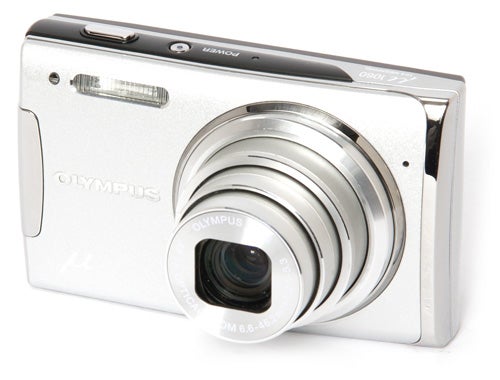
Verdict
Key Specifications
- Review Price: £195.00
About this time last year I reviewed a brace of new cameras from Olympus, the mju 1010 and 1020, and I was reasonably impressed with them, although I was rather puzzled that Olympus would launch two such similar cameras, since both were 10.1-megapixel, 7x zoom premium compacts. Today I’ve got the latest model in the same series in for review, the mju 1060, which is a 10.1-megapixel, 7x zoom premium compact. Imagine my surprise.
The mju 1060 is, not too surprisingly, an upgrade of the 1010 and 1020 design. That’s fair enough though, because it is a good design, and it’s not an insignificant upgrade. The sleek wedge-shaped body has been refreshed, and is now a few millimetres shorter, a few grams lighter and a whole tenth of a millimetre slimmer. The 1060 also gets a new LCD monitor, a big three-inch 230k HyperCrystal screen with a nice wide viewing angle and an anti glare coating. Other features remain unchanged however, including TruPic III image processing, optical image stabilisation and VGA 30fps video recording mode.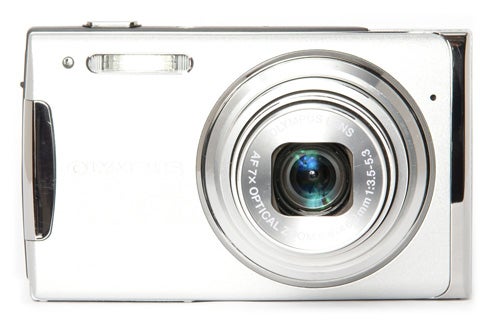
The impressive build quality of the mju series remains as good as ever, and despite weighing only 155g including battery the camera feels sturdy and well made. At its best Olympus can compete on equal terms with any of the other big-name brands, and the mju 1060 will find itself on the same shelf as the Nikon CoolPix S560 (£160), the Panasonic Lumix FX37 (£185), the Sony Cyber-shot T700 (£237) and the Canon Ixus 870 IS £218).
That big monitor screen does mean that the controls are a little cramped, but the buttons are quite large and are internally illuminated, making it much easier to operate the camera in dark conditions, and the main mode dial doubles as a thumbgrip. Like the 1010 and 1020 the mju 1060 is a point-and-shoot ultra-compact designed for social snapshot photography, and so it is mostly very simple and easy to use. It has a very limited range of options; the main program auto mode, a scene mode with 21 scene programs, and an even simpler Intelligent Auto mode. However some features common to other similar cameras are notable by their absence, such as a two-second self-timer or any sort of colour control. The quick function menu only offers white balance, ISO, drive mode, metering mode and picture size/quality, and the main menu doesn’t offer much more. 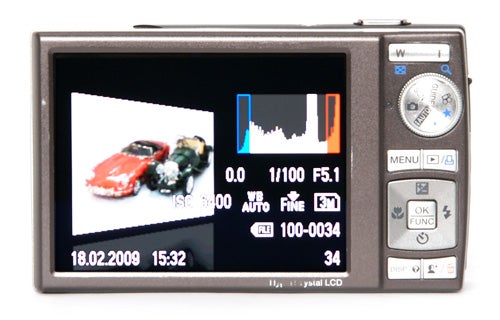
I’ve complained at some length about the terrible menu interface that Olympus inflicts on its compact cameras, but they keep making it even worse. For the 1060 they’ve really pushed the boat out, adding some slow and jerky animations, ugly 8-bit icons in a choice of three colours, and a selection of very boring backgrounds, while missing the one obvious possible excuse for such a change. There is no option to use your own picture as a menu background. 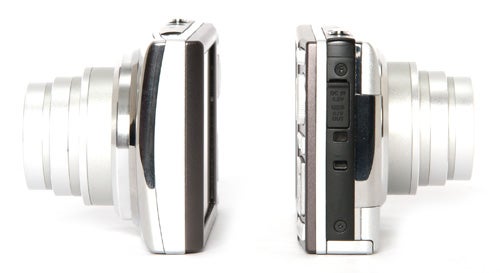
There are a few additional features in playback mode, including an instant fix option that corrects shadow detail and flash red-eye, and a bizarre Expression Edit function that uses the camera’s face detection system to attempt to adjust a subject’s facial expression, although the results are usually somewhere between hilarious and horrifying.
The camera also features Shadow Adjustment, which selectively boosts the sensitivity in darker areas of the frame, and can pull back some shadow detail. It works reasonably well, but does inevitably introduce some noise.
One expects decent performance from a premium compact, and the mju 1060 delivers. It starts up in a little under two seconds, which is nice and fast, and powers down just as quickly. In single-shot mode at maximum picture quality the shot-to-shot time is approximately three seconds on average. The 1060 has a couple of sequential shooting options; either a three-shot burst in just over two seconds, or a choice of two high-speed continuous shooting modes that can shoot at up to nine frames a second, but only at 3MP resolution. Like most Olympus cameras the shooting speed varies dramatically depending on the type of memory card used. The slower M-type cards will reduce the overall performance. 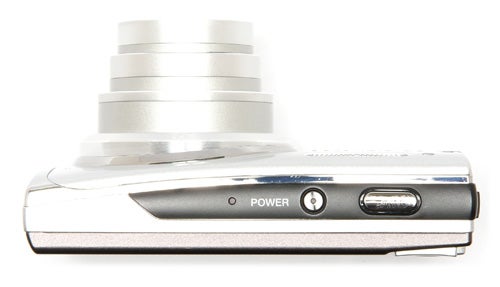
The autofocus system is both fast and accurate in good light, but it slows down considerably in lower light conditions. It has problems focusing in most pub/club situations, and since it also lacks an AF assist lamp, it can’t focus at all in darker conditions. The indoor flash performance is also quite disappointing, so the mju 1060 probably isn’t a good choice for social indoor photography. It’s much better for outdoor daylight photography, where its 7x zoom lens and 260mm-equivalent telephoto become much more useful.
In terms of picture quality, the mju 1060 actually performs very well. White balance, exposure metering and colour reproduction are all excellent, although like most small-sensor compacts the dynamic range is quite limited, with poor shadow detail. In good light the lens captures a lot of fine detail, and the in-camera processing automatically corrects barrel distortion, although the corner sharpness could be better. Image noise too is well handled, with good image quality at 400 ISO and accurate colour balance at all ISO settings, although the 3MP-only 3200 and 6400 ISO settings leave a lot to be desired.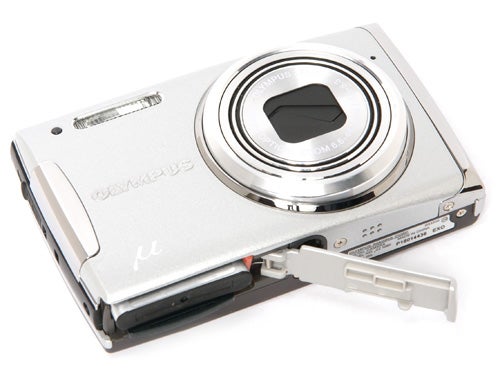
”’Verdict”’
The Olympus mju 1060 is a sleek and attractively designed camera with excellent build quality and good overall performance. It is very easy to use, but apart from its useful 7x zoom range and high-quality monitor it is very short on features. Picture quality is very good, but is let down by very poor low light results.
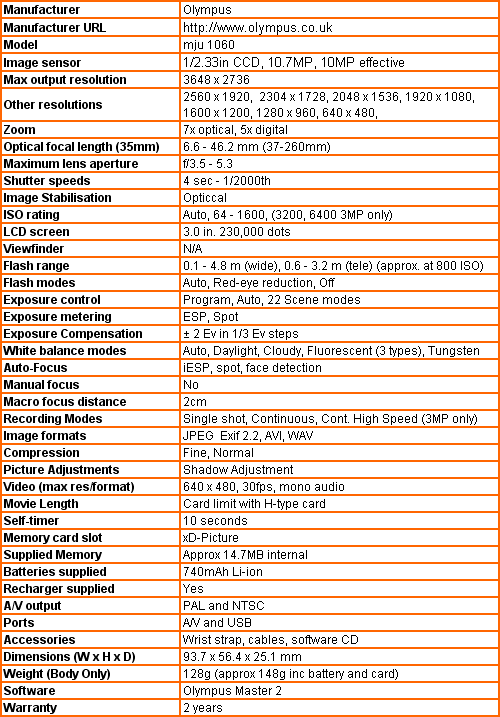
”Over the next few pages we show a range of test shots. On this page the full size image at the minimum and maximum ISO settings have been reduced to let you see the full image, and a series of full resolution crops have taken from original images at a range of ISO settings to show the overall image quality. These ISO test images are shot indoors using reflected natural light for maximum consistency. ”
—-
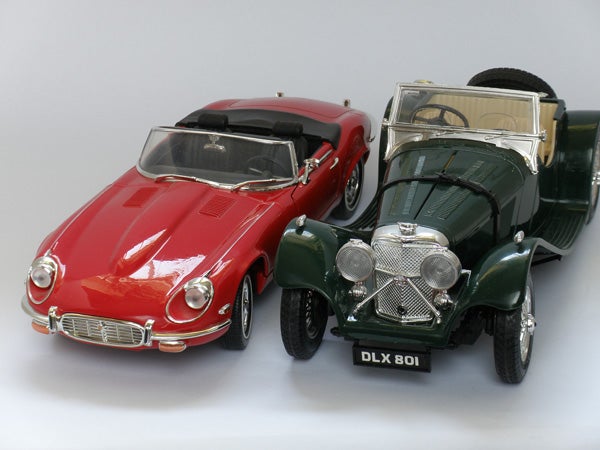
This is the full frame at 64 ISO
—-
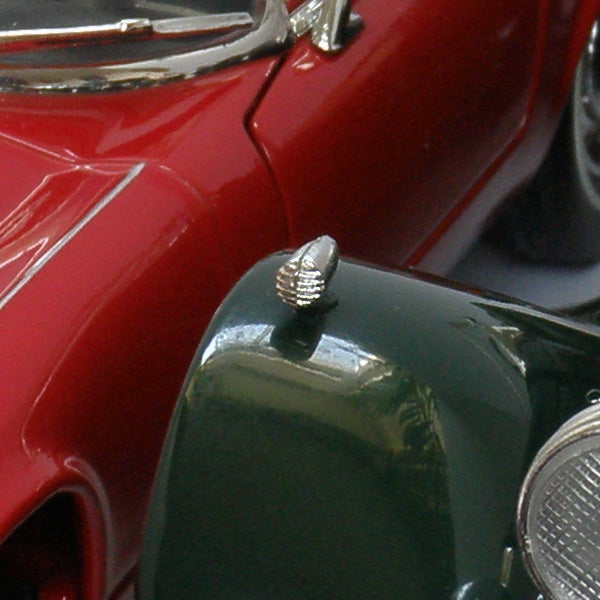
At the lowest ISO setting the 1/4-second maximum exposure time has caused the shot to be slightly under-exposed, but there are only faint signs of image noise
—-
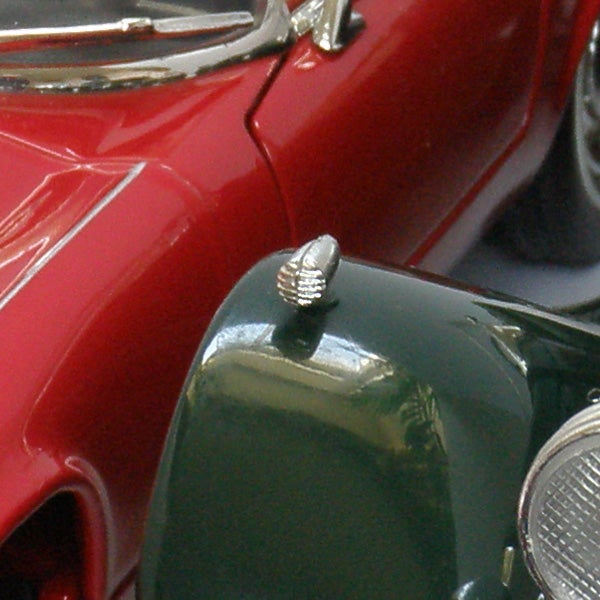
100 ISO is now correctly exposed, but there is slightly more noise than the lower setting.
—-
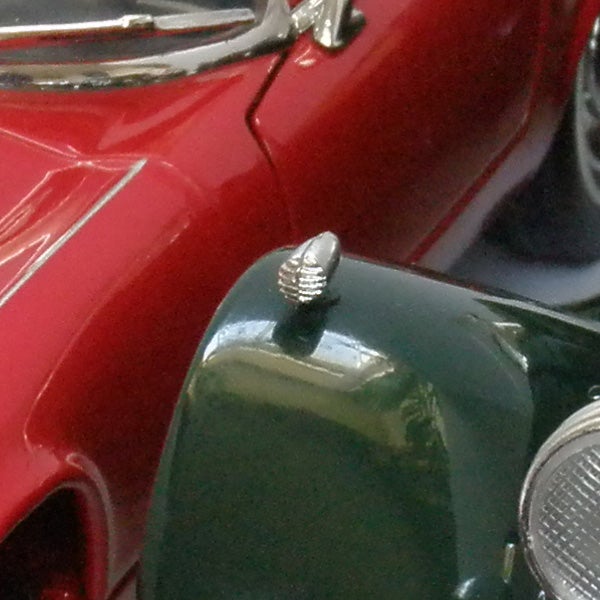
The noise reduction system seems to be tuned to produce the best results at 200 and 400 ISO. This shot would print well.
—-
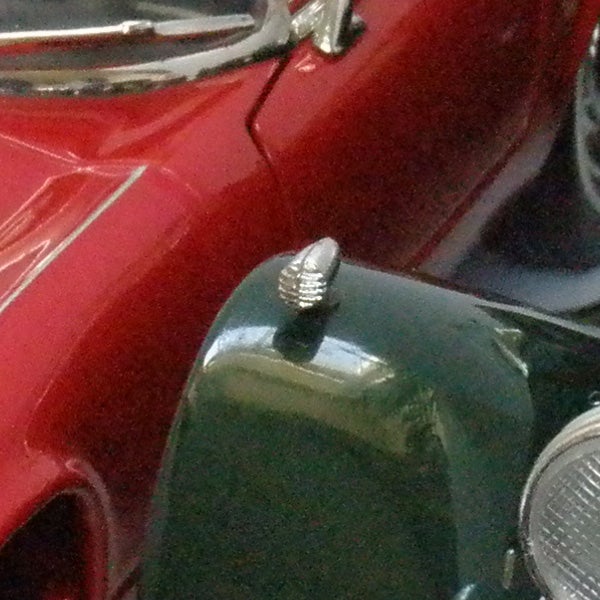
Some detail is lost at 400 ISO, but the result is still quite usable.
—-
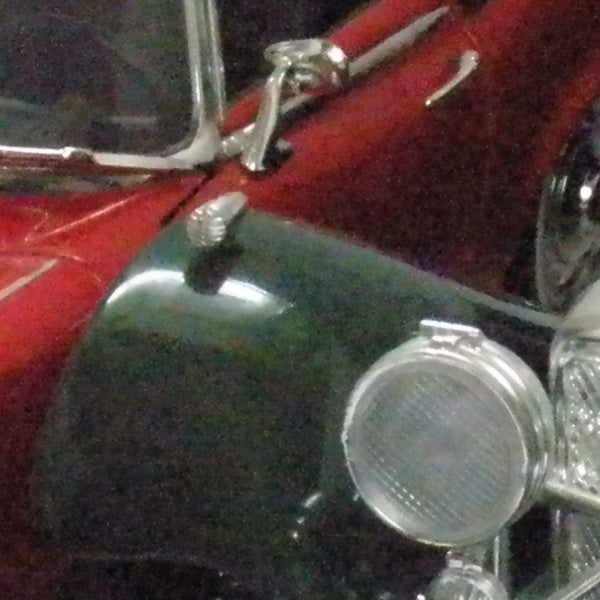
Not so good at 800 ISO though.
—-
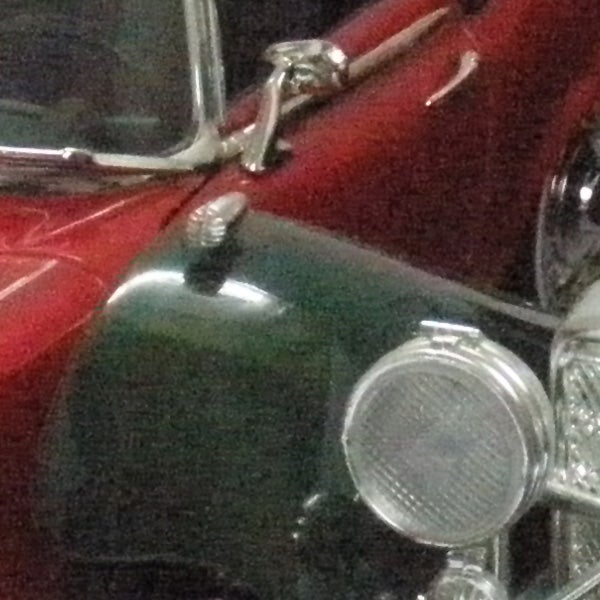
1600 ISO is the highest setting at full resolution.
—-
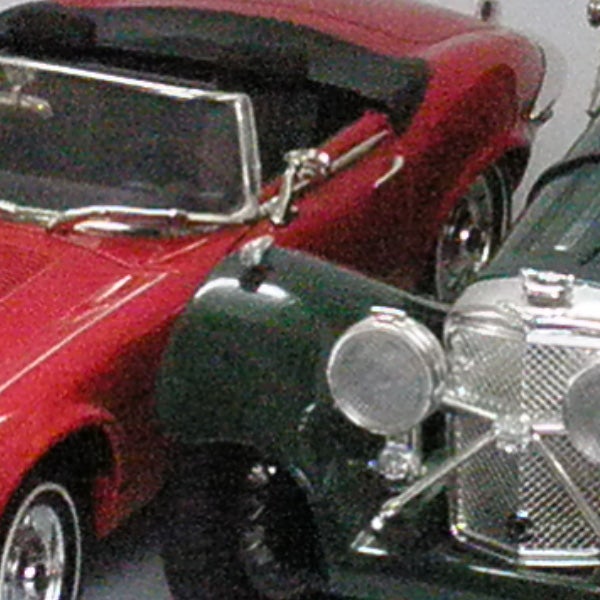
3200 ISO is available at 3MP.
—-
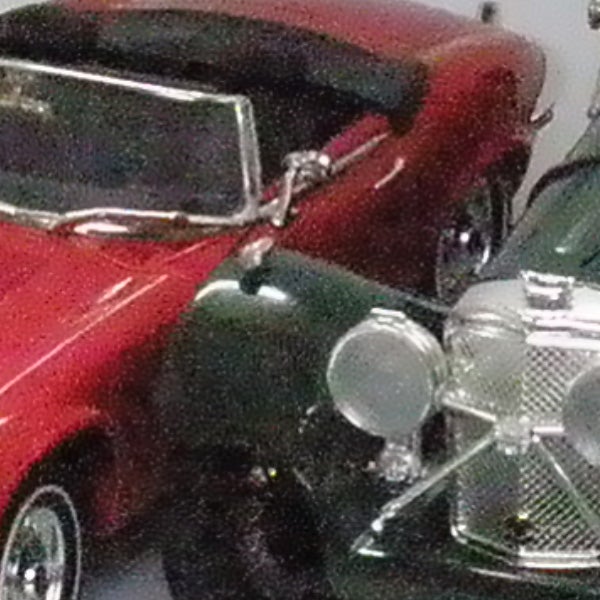
So is 6400, but the quality is pretty terrible.
—
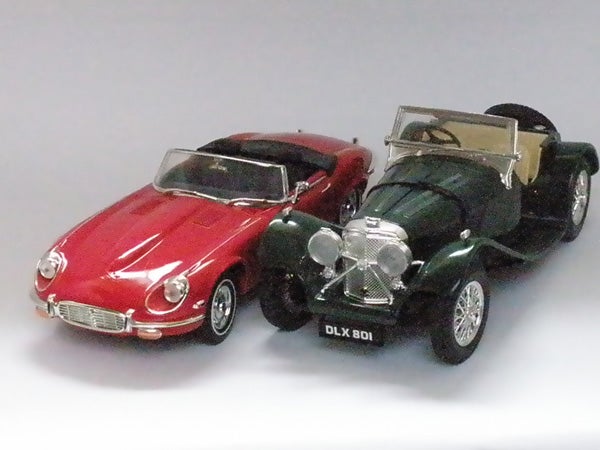
This is the full frame at 6400 ISO.
—-
”A range of general test shots are shown over the next two pages. In some cases, the full size image has been reduced for bandwidth purposes, and a crop taken from the original full resolution image has been placed below it to show the overall image quality. Some other pictures may be clicked to view the original full-size image. ”
—-

Here’s the usual detail test shot of the West Window of Exeter Cathedral, for you to compare with other cameras. See below for a full res crop, or click to see the whole picture.
—-
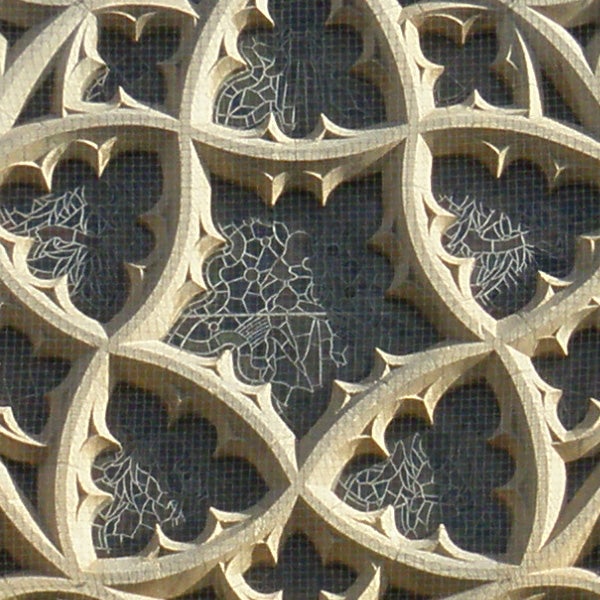
The level of detail is pretty good for a 10MP camera.
—-
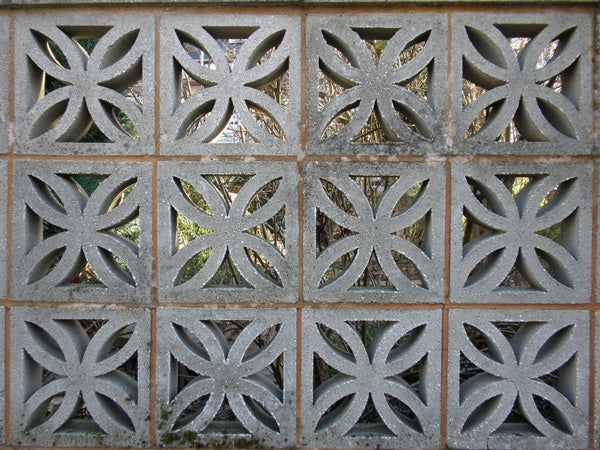
Internal image processing automatically corrects barrel distortion.
—-
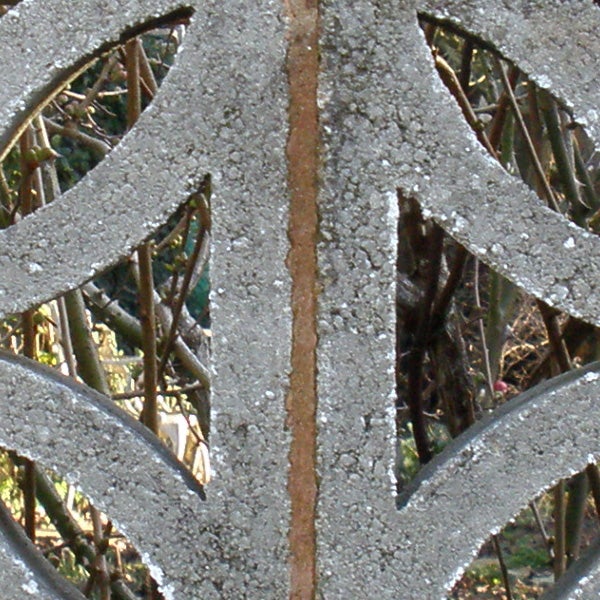
Centre-frame sharpness is very good.
—-
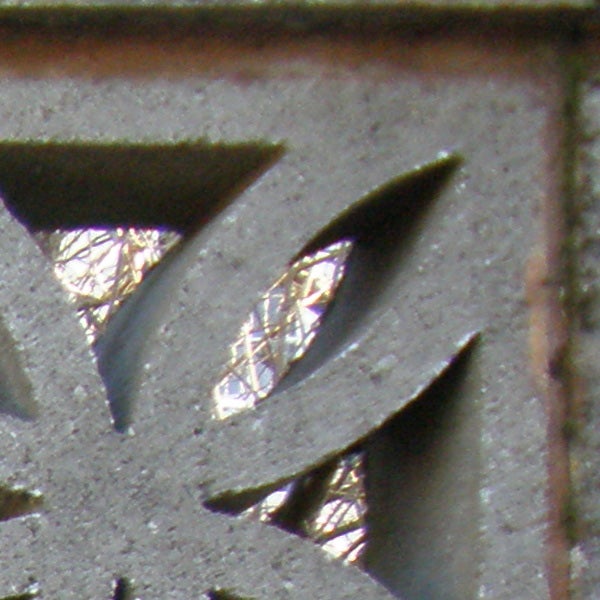
There is some blurring and chromatic aberration in the corners of the frame.
—-
”Here are some general test shots to help evaluate the camera’s overall image quality, including dynamic range, colour rendition and the zoom range of the lens. Some pictures may be clicked to download the full size original image. ”
—-
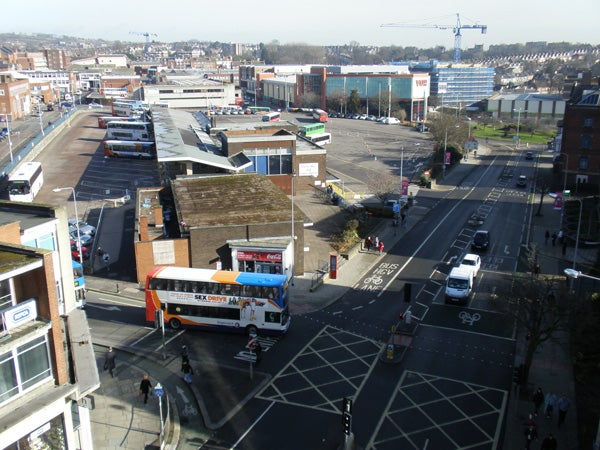
the wide angle end is equivalent to 37mm, not too wide but OK for snapshots.
—-
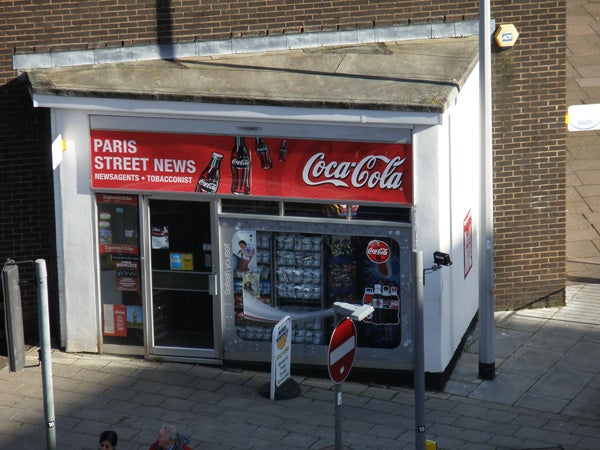
The long end is equivalent to 260mm, a useful medium telephoto.
—-

Colour reproduction is neutral and natural-looking.
—-
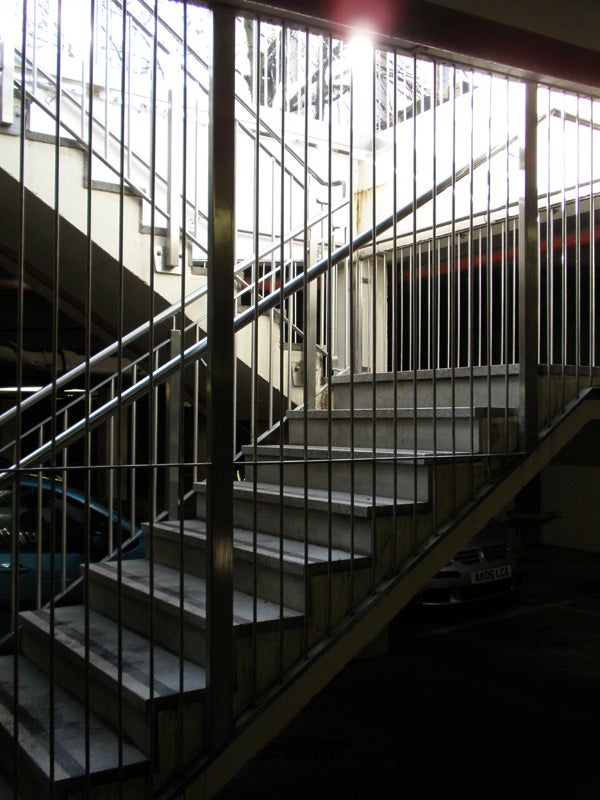
Dynamic range is limited, with burned-out highlights and no shadow detail.
—-

The mju 1060 is great for normal snapshots in good light.
—-
Trusted Score
Score in detail
-
Value 7
-
Image Quality 8
-
Build Quality 10
Features
| Camera type | Digital Compact |
| Megapixels (Megapixel) | 10.1 Megapixel |
| Optical Zoom (Times) | 7x |

